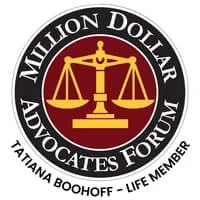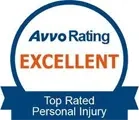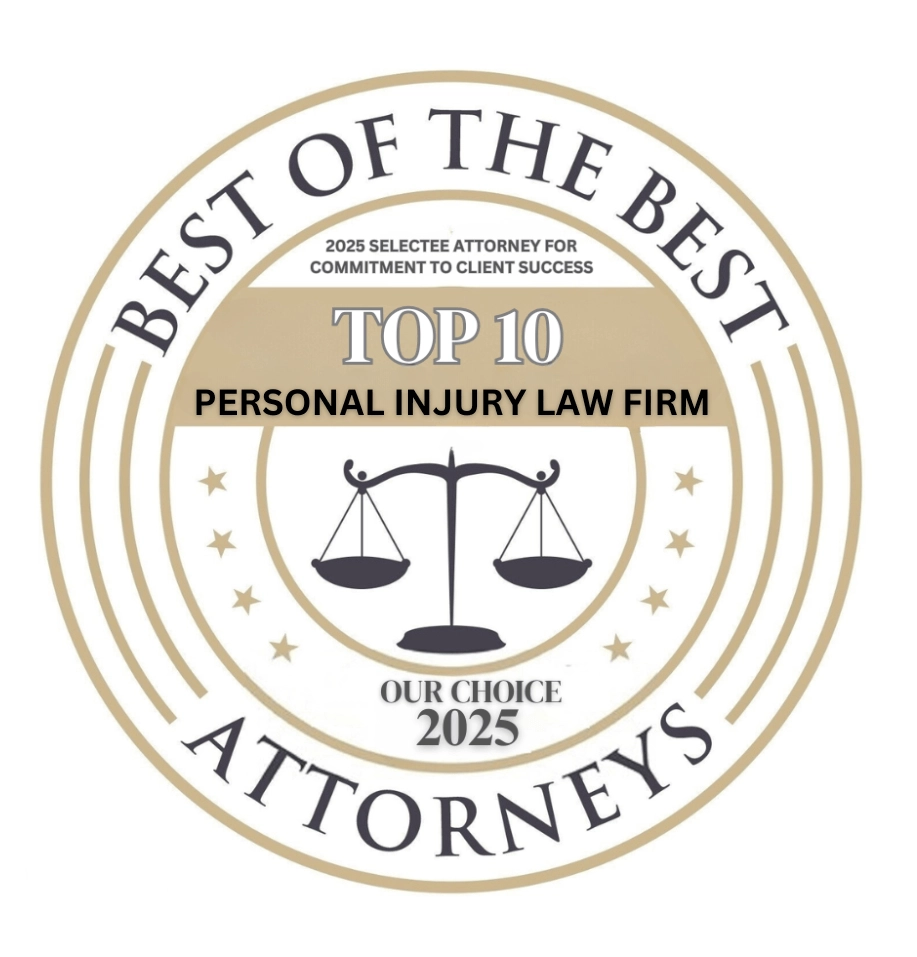Distracted Driving Accident Lawyers in Seattle
If you suffered a personal injury in a distracted driving incident, you deserve a champion who will fight by your side with compassion and skill. Our team of Seattle distracted driving accident lawyers will take on the insurance companies and legal system to get you the outcome you deserve
Why Choose a Distracted Driving Accident Lawyer at Our Law Firm?
Understanding Your Legal Options
From your first call, our team takes the time to listen and learn your unique situation. We’ll walk you through the factors that will increase the value of your claim and help you mitigate risks. Above all, we help you envision a personalized path forward.
Connecting with Your Distracted Driving Accident Lawyer
You will know within 1-2 days if our team can help. Your personal attorney and legal team will guide you through what to expect, ensuring you’re always informed about what’s going on. You will stay in control as an included member of the team working on your case.
Gathering Supporting Documentation
Our diligent legal team will work with you to make sure all the necessary documentation is complete. This includes insurance policy details, medical records, medical and repair bills, and lost wages.
Formulating a Winning Strategy
We’ll assess your case — every detail, every angle — as we fight for the outcome you deserve. We roll up our sleeves and bring an unrelenting commitment and proven track record to formulate a winning game plan, keeping you clearly informed along the way.
Negotiation and Litigation
We are relentless in pursuing what’s right. We work with toughness and resilience as we negotiate directly with the defense to obtain the compensation you deserve. In cases that demand a court trial, our attorneys are expert personal injury litigators with the talent to maximize policy volumes and outcomes.
What to Do After a Distracted Driving Accident in Seattle
Now that it’s the day after the accident, you may have already taken some of these steps. However, if you haven’t, it’s essential to address them as soon as possible:
Report the Accident
If you didn’t call 911 at the time of the accident, contact the local police department’s non-emergency line to file a report. Having an official accident report can be crucial for your insurance claim and any potential legal proceedings.
Document the Accident Scene
If you were unable to take photos or videos at the time of the accident, try to return to the scene as soon as possible to capture any remaining evidence, such as skid marks, property damage, or traffic signs. If you cannot return to the scene, write down everything you remember about the accident while it’s still fresh in your mind.
Gather Information
If you didn’t collect information from the other driver(s) and witnesses at the time of the accident, try to obtain this information as soon as possible. This includes names, contact details, insurance information, and vehicle details. If you cannot contact the other driver or witnesses, your attorney can assist you in gathering this information.
Seek Medical Attention
Even if you felt fine immediately after the accident, some injuries may not present symptoms until hours or days later. If you haven’t already, seek a thorough medical evaluation to document any injuries and ensure your well-being. Keep records of all medical visits, diagnoses, and treatment related to the accident.
Remember, the aftermath of a distracted driving accident can be overwhelming, but taking these steps can help protect your rights and support your recovery process. If you have any questions or concerns about your situation, don’t hesitate to consult with an experienced distracted driving accident lawyer.
Understanding Your Rights as a Victim in a Seattle Distracted Driving Accident
It’s important for car accident victims to understand their rights to ensure that they receive the compensation they need. When it comes to distracted driving accidents, you have the right to:
The Right to Pursue Compensation
If you’ve been injured in a distracted driving accident that was caused by another driver’s negligence, you have the right to pursue compensation for your damages. This includes both economic and non-economic losses, such as medical expenses, lost wages, property damage, pain and suffering, and more.
The At-Fault Driver’s Insurance Should Cover Your Expenses
In Seattle, all drivers are required to carry liability insurance to cover damages they may cause to others in an accident. If the distracted driver who caused your accident has insurance, their policy should cover your expenses up to the policy limits. If the at-fault driver is uninsured or underinsured, you may be able to turn to your own uninsured/underinsured motorist coverage for compensation.
Types of Compensation You May Be Entitled To
As a victim of a distracted driving accident, you may be entitled to various types of compensation, including:
-
Medical expenses: This includes the cost of emergency care, hospitalization, surgeries, medications, rehabilitation, and any future medical treatment related to the accident.
-
Lost wages: If your injuries prevent you from working, you can seek compensation for the income you’ve lost and any future earning capacity that may be affected.
-
Pain and suffering: You can pursue compensation for the physical pain, emotional distress, and mental anguish caused by the accident and your injuries.
-
Property damage: If your vehicle or other personal property was damaged in the accident, you can seek compensation for repairs or replacement.
The Right to Consult with an Attorney
As a victim, you have the right to consult with an experienced Seattle distracted driving accident attorney before speaking to insurance companies. An attorney can help you understand the full extent of your damages, protect your rights, and negotiate with insurance companies on your behalf to ensure that you receive fair compensation for your losses.
It’s important to remember that insurance companies, even your own, may not always have your best interests in mind. They may attempt to settle your claim quickly and for less than you deserve. By consulting with an attorney, you can make informed decisions about your case and increase your chances of obtaining the compensation you need to support your recovery and move forward with your life.
Distracted Driving Statistics and Risks
Prevalence of Distracted Driving
In a recent year, distracted driving claimed more than 3,100 lives. Most people recognize the dangers of distracted driving: increased accident risk, increased distraction, and struggle to keep up with the events on the road. Unfortunately, 46 percent of teens actively admit to texting and driving, as do 49 percent of adults. These surveys also fail to consider people who will not admit to texting and driving.
Types of Distracted Driving Accidents
Distracted driving does not end with texting or cell phone use, though modern smartphones certainly provide more than enough opportunity for distraction. Any type of distraction behind the wheel can increase crash risk: just talking or listening to someone can increase crash risk by 1.3 times, while reaching for a device or other item can increase accident risk by 1.4 times.
Eating and Driving
Most people see no harm in it. While grabbing a French fry at a stop sign may not significantly increase your accident risk, eating while driving takes your attention away from the road. Simply eating and driving may increase accident risk by 3.6 times.
Carrying on a Conversation
If you have a passenger in your vehicle, you will probably decide to talk to them during your journey. Children, in particular, often choose the car as the best place for fascinating, distracting conversations that take your attention from the road.
Using a GPS
Many people now have a GPS on their phones. Others use the GPS built into the car or a separate GPS device. These devices make it much easier to find unfamiliar locations or to navigate in unfamiliar cities. Unfortunately, they also cause substantial distractions that could pose a danger for drivers on the road.
Cell Phone and Smart Device Use
Ultimately, cell phone use poses one of the biggest hazards while driving. Texting and driving often take the driver’s eyes off of the road for several seconds at a time, during which time the car may travel the length of a football field or more down the road.
Other Distractions
In addition to the normal challenges of distracted driving, many people choose to engage in extremely distracting activities behind the wheel. Women may choose to put on makeup. Drivers may fiddle with paperwork, smoke, or try to change the stations on the radio.
Dealing with Insurance Companies After a Distracted Driving Accident in Seattle
After a distracted driving accident in Seattle, dealing with insurance companies can be a daunting task. It’s essential to understand your rights and responsibilities when communicating with insurers to protect your interests and maximize your chances of receiving fair compensation.
Report the Accident to Your Own Insurance Company
Regardless of who was at fault, you should report the accident to your own insurance company as soon as possible. In Seattle, you can file a claim with your own insurer if you have Personal Injury Protection (PIP) coverage, which can help cover medical expenses and lost wages. Be honest and provide accurate information about the accident but stick to the facts and avoid speculating about fault.
Be Cautious When Speaking to the At-Fault Driver’s Insurance Company
The at-fault driver’s insurance company may contact you for a statement or to discuss the accident. Remember that their goal is to minimize the amount they have to pay out, so be cautious when speaking with them. Politely decline to provide a recorded statement and avoid discussing the details of the accident or your injuries until you’ve consulted with an attorney.
Do Not Admit Fault or Apologize for the Accident
When speaking with any insurance company, do not admit fault or apologize for the accident, even if you believe you may have contributed to it. In Seattle, Washington follows a pure comparative negligence rule, which means that your compensation can be reduced by the percentage of fault attributed to you. Let the facts of the case and the evidence determine fault.
Do Not Accept a Settlement Offer Without Consulting a Seattle Distracted Driving Accident Attorney
The distracted drivers insurance company may offer you a quick settlement to resolve the case. While it may be tempting to accept the offer and move on, it’s crucial to consult with an experienced Seattle distracted driving accident attorney before agreeing to any settlement. Initial offers are often lower than what you may be entitled to, and an attorney can help you negotiate a fair settlement that covers all your damages, including future medical expenses and pain and suffering.
Keep Records of All Communication with Insurance Companies
Maintain a file with all correspondence, emails, and phone call notes related to your interactions with insurance companies. This documentation can be valuable evidence if there are any disputes or if your case goes to trial.
Remember, insurance companies have teams of adjusters and attorneys working to protect their interests. By consulting with a skilled Seattle distracted driving accident lawyer, you can level the playing field and ensure that your rights are protected throughout the claims process.
Did You Suffer Injuries in a Distracted Driving Accident?
You can control your own driving behaviors, but you cannot always predict the behavior of drivers around you. Some of them may engage in texting and driving, eating behind the wheel, or taking care of other tasks when they should drive.
If you suffered injuries in a distracted driving accident, you may need legal assistance to navigate the complex justice system.
Contact Boohoff Law online today or call at (877) 999-9999 to schedule your free consultation and learn more about the compensation you may recover for injuries in a distracted driving accident.
Distracted Driving Accident Lawyers in Seattle
Boohoff Law Seattle Office
920 5th Ave, Suite 1530
Seattle, WA 98104
Free Consultation
We Are Here For You 24/7
What Happens When a Driver Gets Distracted?
When drivers get distracted, their eyes and their attention leave the road. Their hands may leave the wheel—sometimes just one hand, and sometimes both of them.
They may also:
- Drift out of their lane. It takes only fractions of a second for a car to slip into another lane, which leaves both the driver of the car that moved off course and the drivers around them at a higher risk of an accident.
- Travel too slow or too fast.
- Swerve unpredictably.
- Miss their turn and overcompensate in an effort to get back.
- Fail to notice important things going on around them, including the actions of other drivers, construction workers, pedestrians, and other potential hazards.
Avoiding Distracted Driving Behavior
As a driver, you have a responsibility to everyone on the road with you to avoid distracted driving behavior.
While you cannot always prevent the distracted behavior of other drivers, you can keep yourself and your passengers safer by following some of these tips to reduce distracted driving.
- Place your cell phone in the back seat. Even better, place it in the trunk. Keep in mind that no message has enough importance to be worth your life or the lives of other drivers on the road with you—but responding to a text message may lead to an accident that ends in death, disability, or serious injury for both you and others in the car with you. If you cannot exercise self-control on your own or you have just committed to reducing cell phone use while driving, try turning your phone off or removing the potential for distraction while you drive.
- Turn off notifications on smartwatches and other devices. While you must drive, make sure that your attention remains on driving, not on checking your watch. Many models will allow you to quickly turn off notifications, which will keep you safer while you drive. Like your phone, your smartwatch and any corresponding notifications will wait until you arrive safely at your destination.
- Pay attention to the road, not eating and drinking. Taking a quick sip out of a straw might not pose much distraction, but turning up a thick milkshake or smoothie and obscuring your vision while you try to get to the bottom of the drink can. Likewise, you might not feel distracted by eating a protein bar or grabbing a sip of your morning coffee, but eating a breakfast sandwich, as toppings slide everywhere and pieces fall off your biscuit, can pose a substantial distraction for even the most disciplined driver. Try to avoid eating and drinking behind the wheel. Most of the time, you can spare a few minutes to pull over or eat when you reach your destination. If you struggle to find enough time to eat and often find yourself powering through a fast food meal behind the wheel, consider how you can rearrange your schedule to leave more time in your day.
- Set your GPS before you get started. If you must make modifications to your route or check information provided by the GPS, pull off the road or have a passenger take care of those tasks for you. Looking down at your GPS takes your attention off of the road and poses a significant danger, while taking care of those tasks ahead of time will increase your odds of successfully reaching your destination.
- Take a minute after you start the car. Set the radio to your preferred station and adjust the temperature controls. Make sure the seat remains in your preferred position and that you have prepared your vehicle to drive before you put the car in drive. By preparing yourself ahead of time, you can reduce your distractions while you drive and increase the odds that you will safely reach your destination. If you do need to adjust temperature controls or change the radio station during your drive, pull off the road or make fast adjustments at red lights or stop signs.
- Avoid distractions behind the wheel. Driving and putting on makeup, checking paperwork, or fishing for a toy that your child dropped in the back seat can significantly increase accident risk. What you consider multitasking could end in a deadly accident. Instead of trying to complete those tasks while driving, wait until you reach your destination or complete them ahead of time. Attempting to multitask takes too much attention from your drive.
- Teach the kids that when you drive, you must focus on the road. Kids can pose a potent distraction no matter where they are. When you drive, however, the kids should know not to distract you from the road. Teach your kids to avoid asking you to complete tasks that can wait, from opening a juice box or snack packet to reaching down between the seats for a dropped toy. In some cases, you may take care of those tasks while the vehicle is not in motion. In other cases, your child may need to wait until you reach your destination. Don’t worry: they will survive the wait.
Did You Suffer Injuries in a Distracted Driving Accident?
You can control your own driving behaviors, but you cannot always predict the behavior of drivers around you. Some of them may engage in texting and driving, eating behind the wheel, or taking care of other tasks when they should drive.
If you suffered injuries in a distracted driving accident, you may need legal assistance to navigate the complex justice system.
Contact Boohoff Law online today or call at (877) 999-9999 to schedule your free consultation and learn more about the compensation you may recover for injuries in a distracted driving accident.
Client Testimonial
“Everyone here is so helpful. They jumped through every hoop necessary to get me the settlement I rightfully deserved. Tracey and Maria are super sweet. They made me feel right at home. I absolutely recommend Boohooff Law and will use them again in the future if I am ever in a similar situation. Thank you all at Boohooff who helped me with my case. 10/10 stars hands down!” – Brandy K.
Our process.
-
1. Understanding your optionsFrom your first call, our team takes the time to listen and learn your unique situation. We’ll walk you through the factors that will increase the value of your claim and help you mitigate risks. Above all, we help you envision a personalized path forward.
-
2. Connecting with your attorneyYou will know within 1-2 days if our team can help. Your personal attorney and legal team will guide you through what to expect, ensuring you’re always informed about what’s going on. You will stay in control as an included member of the team working on your case.
-
3. Supporting documentationOur diligent legal team will work with you to make sure all the necessary documentation is complete. This includes insurance policy details, medical records, medical and repair bills, and lost wages.
-
4. Formulating a winning planWe’ll assess your case — every detail, every angle — as we fight for the outcome you deserve. We roll up our sleeves and bring an unrelenting commitment and proven track record to formulate a winning game plan, keeping you clearly informed along the way.
-
5. Negotiation and litigationWe are relentless in pursuing what’s right. We work with toughness and resilience as we negotiate directly with the defense to obtain the compensation you deserve. In cases that demand a court trial, our attorneys are expert personal injury litigators with the talent to maximize policy volumes and outcomes.
Recovery is personal.
We’re here for you.
We’re close by. And if you can’t make it to us, we’ll meet you where you need us, at home or in the hospital.
You're better off with Boohoff.











The information on this website is for general information purposes only. Nothing on this site should be taken as legal advice for any individual case or situation. This information is not intended to create, and receipt or viewing does not constitute, an attorney-client relationship.
available 24/7
(877) 999-9999
